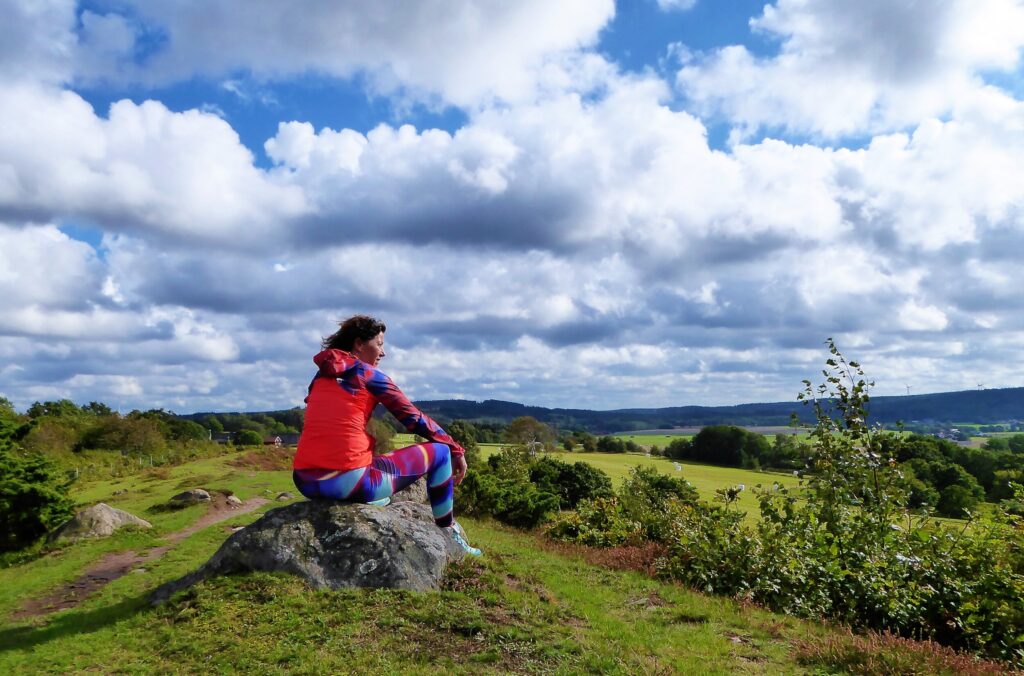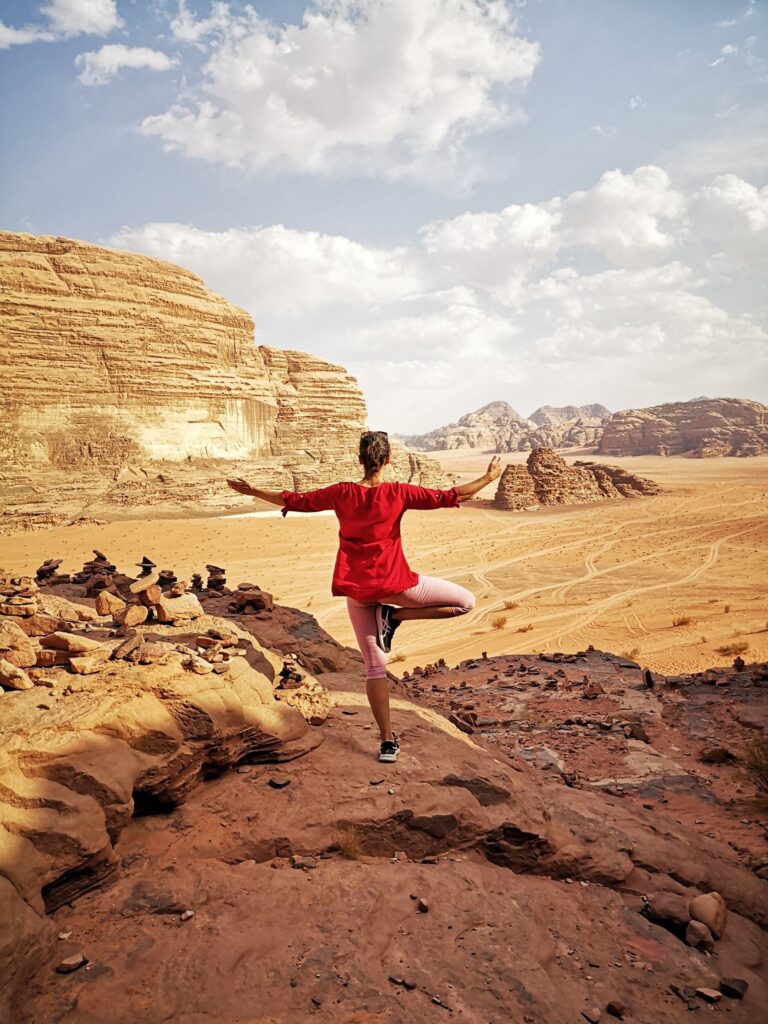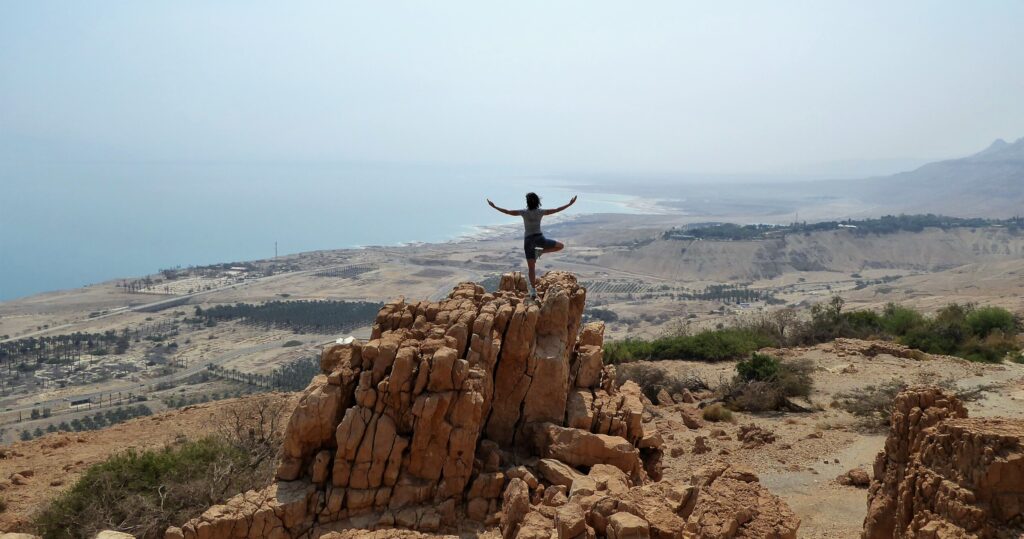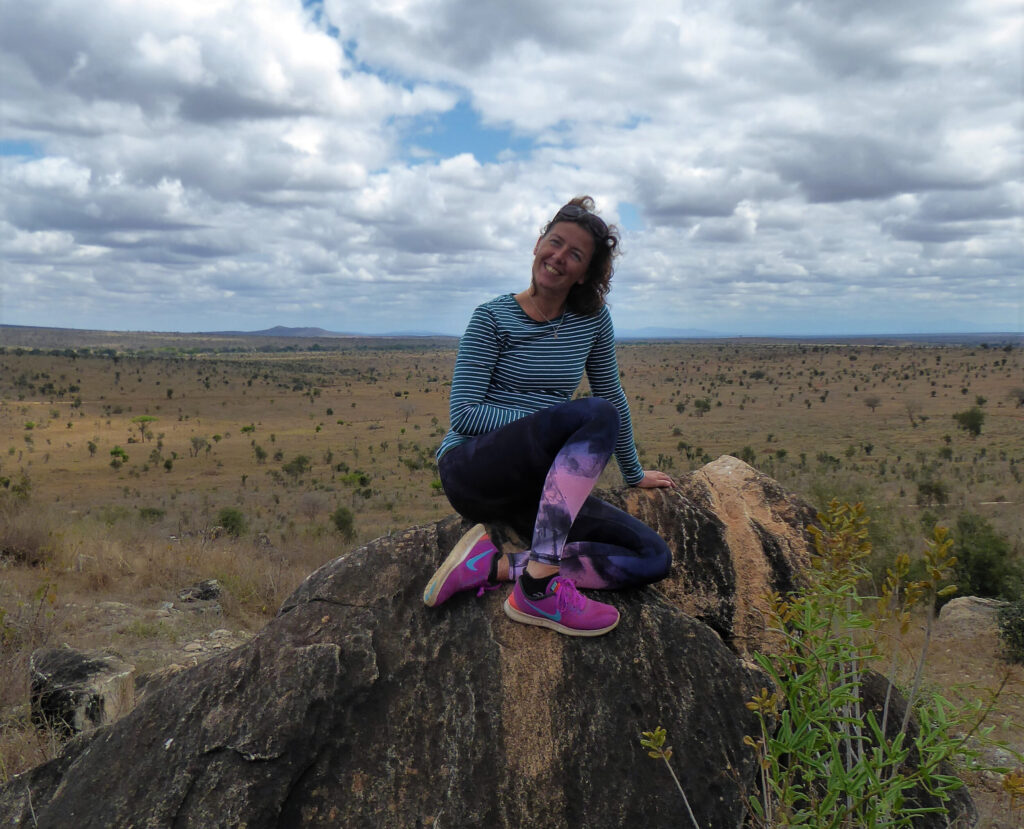In my first blog about the eightfold path of Yoga, I described the first path, Yama. This was about how your behavior toward the outside world and toward your fellow human beings is, or could be at its best. So the social rules of life that apply if you want to lead a pleasant and good life. This second path is Niyama and is about the intentions that come with it and are therefore more inwardly focused.
What about your personal values and disciplines, and thus with focus on you and your thoughts? After walking these two paths come the asanas we know. The beautiful/challenging/demanding yoga poses that you can work with and that I also like to take beautiful photos of.
Read this first blog about the Yamas – The First Path Yama
The Eightfold Path of Yoga
The Second Path is Niyama – Meaningful Travel
How do I apply yoga in my daily life?
Realize that you can work on practicing yoga at any moment of the day. You can always train your mindset with these first two paths. With every thought, with every action you take, you can ask yourself: Am I doing this with the right thought? Am I doing this for myself, am I doing it for the other person? Do I expect something in return? Does my action bring violence to someone in any way? Is this how I want to spend my energy? Am I satisfied with what I have?

The Second Path is Niyama
This second path of the eightfold path of Yoga is Niyama. This means something like prescription or prohibition. This path also consists of 5 parts again. I will name and write out these 5 niyamas separately so that they get more body. I do this for you but just as much for myself again. You forget small pieces of what you’ve learned so quickly that this is also very good for me to do.
Every time you read the texts you learn something different, you read it in a different way and you understand it a little better. So for you I share it and for myself I write and research it anew. This way I work on my Svadhyaya, the fourth Niyama. Which you will read more about in a moment.
Tip: Try taking a day or week for each niyama to focus your attention specifically on that part. To become well aware of what it entails, what it has connections with, and what thoughts or actions this all influences.
The Eightfold Path of Yoga
- Awareness is the key to a mindful life.
Be aware of what you think, what you do, and what you’re busy with. Then you are in the moment and you live consciously. Also then you ensure that your thoughts can’t run away with you so much. Do you find it difficult to apply this in your daily life? I also wrote a blog about this – 6 tips to live mindfully.

The first of the 5 Niyamas is Shaucha. This focuses on keeping your body and mind clean and pure.
First Niyama – Shaucha
Shaucha can be translated as Purity or Cleanliness. And look at this as broadly as possible in your life. So purity/cleanliness in body, your thoughts and also your spirit/soul. But also think about purity in your environment and thus your house, etc.
How can you put this into practice, you wonder? On all kinds of levels, different exercises can be thought of. Just try setting a day under the sign of one of these levels. I will briefly explain them all.
There are various cleansing techniques for your body. For example, I did the neti and kriya (colon cleansing) during my first days of my 200RYT yoga training. With neti you clean your nose with a salt solution in lukewarm water. This nasal cleansing has multiple effects on your airways and nasal mucous membranes. The kriya, colon cleansing, was done by drinking a number of large glasses of lukewarm water with salt. After this we did yoga asanas (exercises) to activate and empty the intestines. One after another had to go to the toilet and emptied themselves. I must admit that it had no effect on me whatsoever. My intestines didn’t react to it and that day I just had to go to the toilet after dinner, like every other day on the road.
In addition to these physical cleanses, you also have purity in thoughts and in your spirit and soul. How can you put these into practice? How do you train your thoughts to think and feel purely?

Awareness – Taking Responsibility – Mindful Living
My way is to focus on positive thoughts, on honest and pure thoughts. In this way I work on purifying my mind, thoughts and emotions. Because everything you give attention to grows, this becomes easier as you do this more often. But also those positive parts stand out more and you take those positive paths sooner. The more often I realize that I have thoughts that are full of prejudices or don’t help a nicer life because they encourage jealousy or envy, the sooner I can stop them.
In this way I worry less, worry less and burden my thoughts less often with a meaningless thinking tirade. By examining those thoughts I also often discover that there are many assumptions behind them that don’t have to be true at all. Then I made conclusions from assumptions, etc. It’s really good to be/become aware of this.
Tip to read – All you give attention grows / You suffer the most by the suffering you fear
Second Niyama – Santosha
This second Niyama is Santosha and can be translated as Contentment. Finding contentment in yourself, not in the things around you or derived from others. What if that other thing from which you derive your contentment falls away or changes, where does your contentment remain then? Make sure that you have your contentment in your own hands. Don’t give that ‘power’ away to another. You have the responsibility for your contentment, the ultimate happiness in your life.
- Be mature in that and take responsibility for your life.
Take responsibility for your actions and then also reap the contentment that comes from them. You brought this about, you are responsible and you may be proud of that.

This Niyama is also connected with the Yama Aparigraha – Non-possessiveness. Because you need contentment to be non-possessive but you will also have to experience non-possessiveness to be content.
To practice this in practice, it’s a good idea to live in the NOW. Are you content NOW? Do you feel good NOW? By living mindfully you learn to experience more contentment. I wrote a blog about it earlier. Read: Experience more contentment by living mindfully.
The Second Path is Niyama – Eightfold Path of Yoga
Third Niyama – Tapas
This third niyama; Tapas means something like: Inner Strength, Sobriety and Self-discipline. Because Tap (the first part of Tapas) means fire or heat, it is also translated as Burning zeal – Essential energy. You can see it as the fiery desire to bring (positive) changes into your life. You have to work for it, it doesn’t come by itself, you need discipline for it. Think that you want to do that 10 or 20 minutes of meditation every day. Or that you get back on the yoga mat to practice that pose that you think you can’t do again. Or for example adjusting your eating pattern by eating healthier or leaving out animal products.
- All positive changes that require fiery energy, perseverance and self-discipline from you.
It’s good to grow, it’s nice to let your fiery energy work… But also know that you may be content (Santosha – the second Niyama) with where you are, what you do and what you have already achieved. Finding a nice balance in that is important.
Also realize that you are exactly where you should be and that you have already gone through growth to get to the point where you are now.

4th Niyama – Svadhyaya
With this 4th Niyama, it’s about you being allowed to get to know yourself. Sva means Self/Inner reality and Dhyaya means Study/Self-study, Reflection. This is broadly translated to study of yourself and study by yourself. We have the I and the Self. The I is bigger, is therefore also more inclined to go into defense and we also call it the ego. The Self is more modest.
You can apply Svadhyaya by practicing yoga and looking inward, meditating in silence and by reading books and broadening your knowledge. Becoming more aware of yourself and thereby better seeing the difference in yourself and your ego.
By meditating you learn about yourself and thereby you broaden knowledge about the self. If you consider that everything is one and one is everything, then at some point you would make contact with the all-encompassing field and gain the insights we seek. But before it gets that far you can start practicing svadhyaya by reading or if you don’t like reading, watching films/documentaries or listening to podcasts.
Meaningful Travel – Meditation/Yoga – Mindful Living
5th Niyama – Ishvara Pranidhana
This fifth niyama can be translated as “Surrender” (Acceptance/Letting go) and then a surrender to God or the Divine. And if you consider that everything is one and one is everything, then it is a surrender to the Universe, the All and thus also to Yourself.
Surrender therefore also means Acceptance and Letting go. Accepting that your body or mind sometimes needs rest and giving it that too. Letting go that you sometimes don’t meet another’s expectations but that you listen to yourself and walk the best path for you.

Whether your surrender is to a moment of happiness or a difficult moment, if you do it with a loving intention you will always go through positive growth.
The Second Path is Niyama
Learn about the Eightfold Path of Yoga
For me, describing this second path and looking up and thinking of examples was also very educational again. I hope that you can also draw inspiration from this and that it encourages you to positive growth.
In a while I will share a blog about the third path, Asana, in the eightfold path of Yoga. The familiar yoga poses that we all know and mean when we (largely) practice yoga in the west. Will you come back then to read about that too?
Do you share this inspiration?
Want to read some more?
